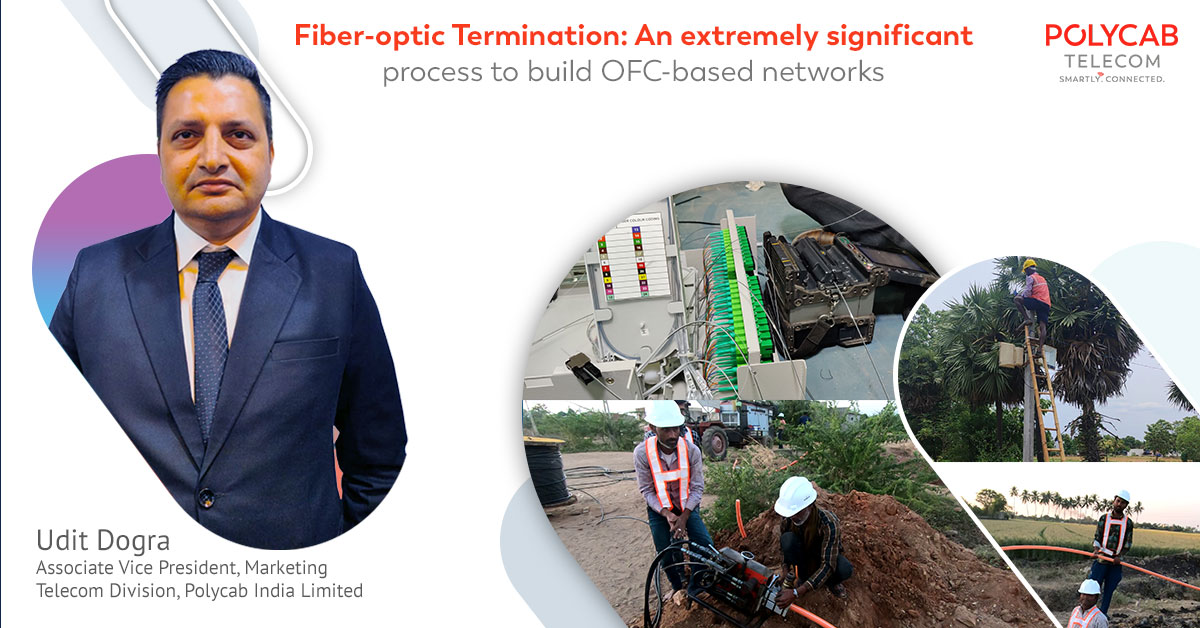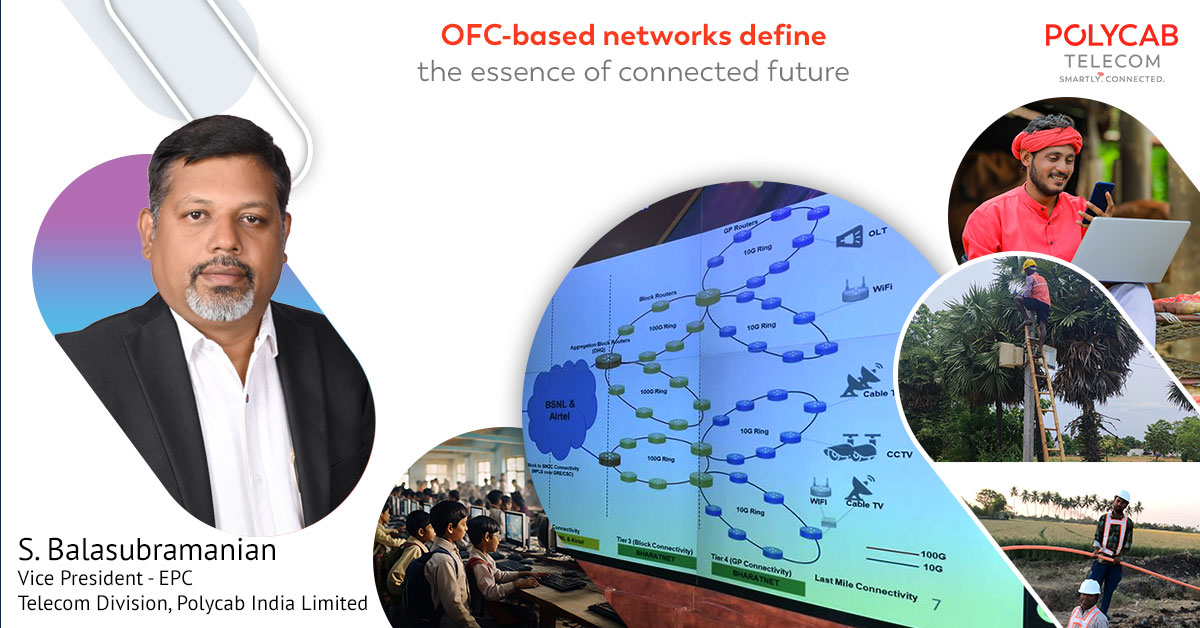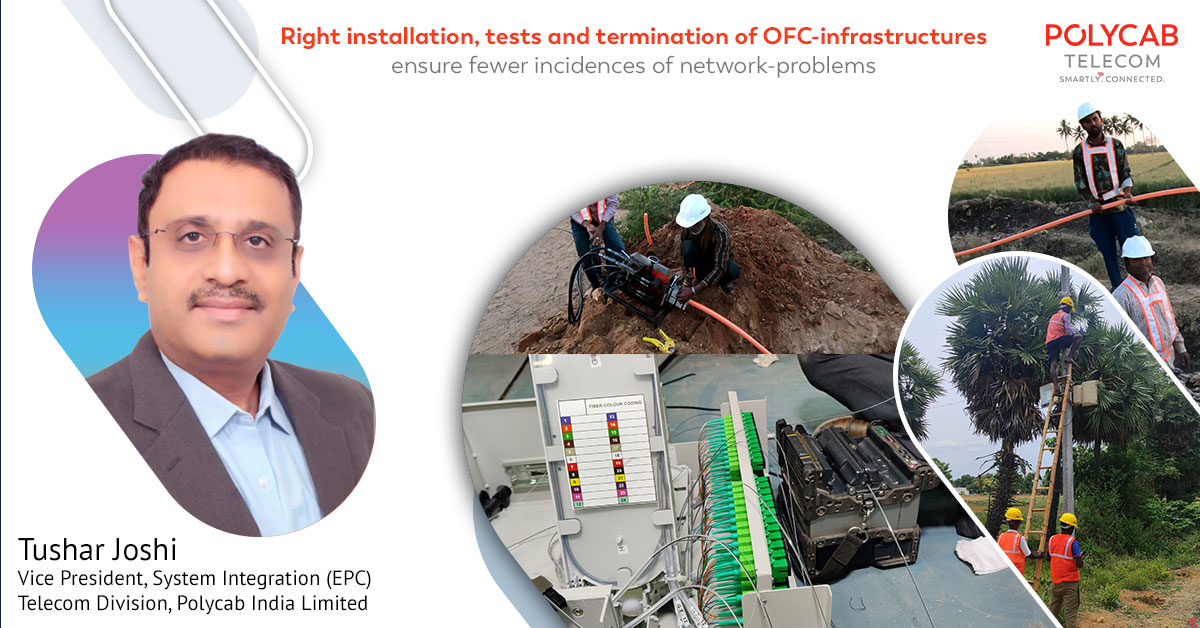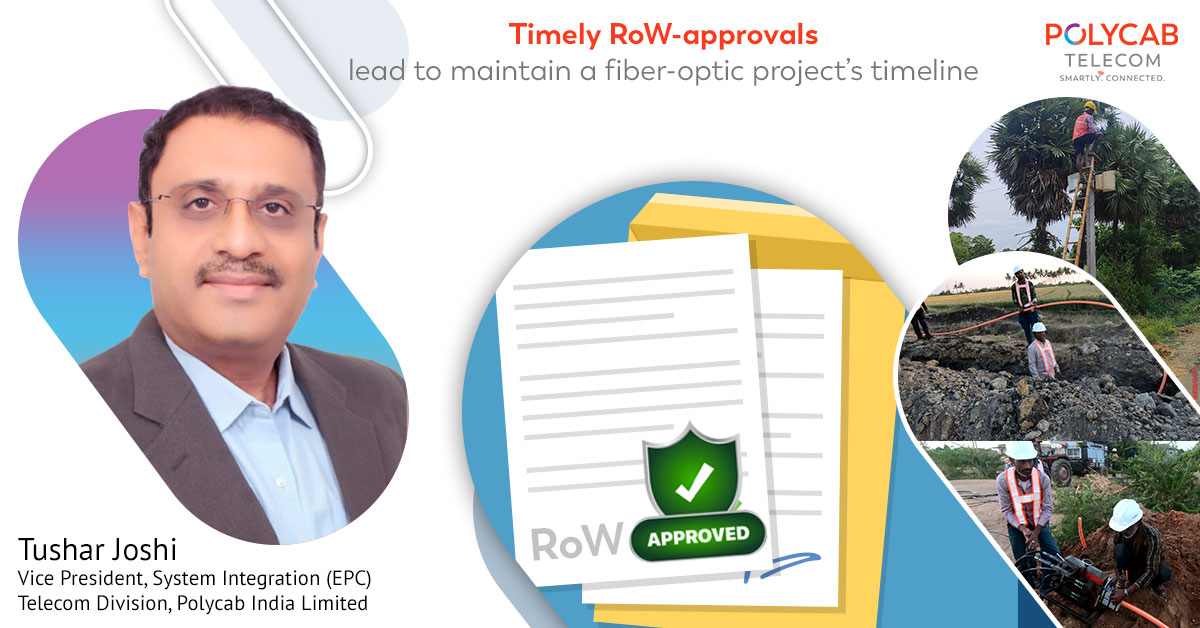A robust fiber-optic infrastructure, providing high-speed data-transmission with adequate bandwidth, is imperative to ensure connectivity, that works as a key component of economic wellbeing and development in an area. Getting timely and affordable approvals for Rights of Way (RoW) permissions from concerned authorities goes a long way in enabling smooth infrastructure rollout for any fiber-optic project. Fiber-optic networks are constructed through the placement of Optical Fiber Cables (OFCs) both, in underground and aerial ways. In underground construction, OFCs are laid in a conduit system, buried through blowing, trenching, jack and bore, multi-directional bore or directional bore techniques, whereas OFCs are placed on top of utility or telephone poles in the aerial fiber-optic construction. Cables, conduits and other utility-structures are placed along national highways, railway crossings, forests, rivers or varied community establishments. The process requires obtaining necessary permits from concerned authorities. A comprehensive checklist of several local and departmental approvals, clearances and No Objection Certificates required at different stages of the project is made. Engineering team creates permit-drawings using AutoCAD and GIS Mapping services and submits the permit-applications to the proper jurisdictions. RoW-management has a big role in the deployment of optical infrastructure, in terms of meeting project-timelines. Consistent tracking of all pending permits with an efficient review process and regular communication of the status of each permit to the concerned officials becomes handy in accelerating the infrastructure rollout at the last mile.
Polycab Telecom, a division of Polycab India Ltd., is best-known for the delivery of major telecom infrastructure projects, with capabilities to roll out large telecom Infrastructure projects for both, Broadband and Wireless Networks. We’ve been regularly delivering our services for BharatNet, world’s largest rural broadband project, wherein we achieved back-to-back timely completion of projects in Gujarat and Bihar. Working currently for another project under BharatNet Phase-II in Tamil Nadu, we’re in the process to lay OFCs for around 16,500 kms, with almost 85% being aerial and the rest underground, as mandated by the TANFINET, a Special Purpose Vehicle (SPV), instituted by the state.
Working as a Project Implementing Agency (PIA) in phase 2 of the BharatNet project for Saurashtra-region in Gujarat, we executed our responsibility with taking clearances from respective concerned authorities for 480 railway-crossings, 280 Narmada canal-crossings, 780 bridge-crossings and many more crossroads and intersections. All the clearances from 17 different agencies, like forest department, national highway authorities, gas agencies, municipal authorities for road clearances, drain clearances and others were taken, right at the beginning with proper documentation, after we finalized the design of the network. We were also helped immensely by the Gujarat government, which for the first time facilitated a PIA by making administrative reforms, in terms of RoW-waivers and permit-grants for using unmetered connections.







